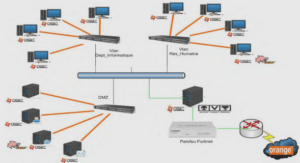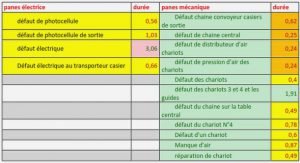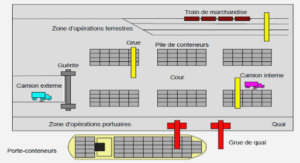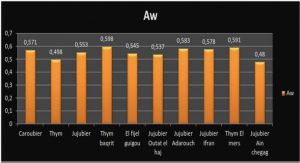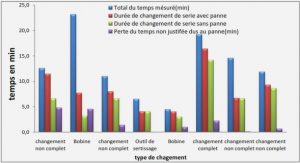ALLIAGES DE FONDERIE
REVIEW OF THE LITERATURE
INTRODUCTION
Aluminum-silicon alloys, especially near-eutectic alloys containing -11% Si, are widely used in the automotive industry because of their excellent foundry characteristics and mechanical properties. These alloys have, therefore, replaced iron and steel in many components, including transmission cases and intake manifolds, as well as in more critical components such as engine blocks, cylinder heads, and wheels; this extended application of Al-Si alloys for automotive components has created the need for a more in-depth understanding of the effects of microstructure on the machinability of these components.
The microstructure of Al-Si alloys is typically composed of an aluminum matrix containing eutectic silicon; the silicon can be present in the form of acicular needles, blocklike plates, or a refined fibrous structure, depending upon the level of chemical modification and the cooling rate of the cast section. In general, eutectic silicon is not uniformly distributed, but tends to be concentrated at the interdendritic boundaries.
These microstructural constituents also include Fe-intermetallics which commonly precipitate in the form of aAli5(Fe,Mn)3Si and /f-AlsFeSi phases, secondary eutectic phases such as Mg2Si and A^Cu, and other complex intermetallics constituted from the remaining liquid during the final stages of solidification.
IMPORTANT ISSUES IN METAL-CUTTING OPERATIONS
During the cutting process, the cutting tool comes into contact with the workpiece material and removes part of it. The main study areas in material cutting may be summarized into the following three groups:
(i) Aspects of the cutting tool involving the geometry of tool design. The properties of the cutting tool materials, tool failure mechanisms, and predicted tool life.
(ii) The properties of the workpiece material including mechanical behaviour; the physical, chemical, and microstructural features; and the thermal properties.
(iii) Operating parameters such as cutting speed, feed rate, and depth of cut.
The interaction between these three aspects of machining determines the efficiency of a given metal-cutting process. For example, in cutting a specific workpiece, as soon as the cutting tool is chosen, the operating parameter predetermines the rate of material removal, the ultimate quality of the machined surface, and the duration of tool life. If a different tool should be chosen, e.g. to obtain a different rake angle, the rate of material removal may not necessarily change, whereas tool life and the quality of the machined surface may do so.
The reason for this is because the material behavior changes as a result of the changes brought about in the cutting stress distribution and the plastic strain distribution ensuing from prior changes in the geometry of the cutting tool.The three most important machining parameters which determine the rate of metal removal are the cutting speed, the feed rate, and the depth-of-cut. Optimizing these three parameters results in minimizing the possibilities of tool failure, and thereby prolonging tool life. Tool life is influenced mainly by cutting speed, then by the feed rate, and to alesser degree, by the depth-of-cut.
Experiments have shown that when the length-of-cut is about ten times greater than the feed rate, a further increase in this parameter will have no significant effect on tool life.
In practice, the first step is to select the depth based on the tool, workpiece, power, and the rigidity of the equipment. Since depth-of-cut has the least influence on tool life, it is advisable to use the deepest cutting depth possible. The second step is to select the feed rate, in that it depends on the specification of the final machined surface. Under normal circumstances, the smaller the feed rate, the better the quality of the finish. Cutting speed also has a strong potential influence on tool life.
The mechanical properties of either tool materials or workpiece materials may change significantly with variations in the cutting speed. Higher cutting speeds can contribute to increasing the removal rate of unwanted material, but the effects on tool life will vary noticeably with the cutting conditions. The reason for this has been recognized as the rise in temperature at the contact area between the cutting tool and the workpiece. Increasing the feed rate also causes the temperature to rise, thereby increasing the contact stress and the plastic deformation of the workpiece material in the chip formation area.
MACHINING OF ALUMINUM ALLOYS
Aluminum alloys are among the most machinable of the common metals. Compared to that of steel, the machinability of aluminum alloys features considerably lower cutting forces and substantially higher cutting speeds for which comparable tool-life values may be obtained. The economically optimal cutting-speed range for machining aluminum alloys has its lowest limits set by the occurrence of built-up edge material and the resulting rapid deterioration of surface quality. Aluminum alloys are thus usually machined by applying cutting speeds of not less than 90 m/min.
A higher cutting-speed limit for machining aluminum, however, cannot be defined exactly since such a limit would depend on tool wear or tool life, or the occurrence of deceptive chip formation; it should be noted that this limit may also vary in accordance with the alloy composition and the cutting parameters involved. When machining aluminum alloys, even though the specific cutting force is only about one fourth that of steel, the machining capacity required for economical machining is three times as high, since high cutting speeds may need to be applied.
|
Table des matières
RÉSUMÉ
ABSTRACT
ACKNOWLEDGMENTS
PUBLICATIONS
TABLE OF CONTENTS
LIST OF FIGURES
LIST OF TABLES
CHAPTER I DEFINING THE PROBLEM
1.1 INTRODUCTION
1.2 OBJECTIVES
CHAPTER 2 REVIEW OF THE LITERATURE
2.1 INTRODUCTION
2.2 IMPORTANT ISSUES IN METAL-CUTTING OPERATIONS
2.3 MACHINING OF ALUMINUM ALLOYS
2.4 EFFECTS OF METALLURGICAL FACTORS ON MACHINABILITY OF Al-Si ALLOYS
2.4.1 Alloying Elements
2.4.1.1 Role of Si and Melt Treatment in Al-Si Alloys
2.4.1.2 Role of Fe Intermetallics in Al-Si Alloys
2.4.1.3 Role ofCu and Mg in Al-Si Alloys
2.4.1.4 Role of Free-Cutting Elements in Al-Si Alloys
2.4.2 Microstructural Features
2.4.3 Heat Treatment
2.5 MACHINING OPERATIONS
2.5.1 Drilling Process
2.5.1.1 Drill Nomenclature and Geometry
2.5.1.2 Operating Conditions
2.5.1.3 Dry Drilling of Aluminum Alloys
2.5.2 Tapping Operations
2.6 MACHINABILITY CRITERIA
2.6.1 Cutting Forces Experienced During Drilling Operations
2.6.2 Tool Wear and BUE Formation
2.6.3 Tool Life Criteria
2.6.4 Chip Formation in Drilling
CHAPTER3 EXPERIMENTAL PROCEDURES
3.1 INTRODUCTION
3.2 ALLOY PREPARATION AND CASTING PROCEDURES
3.3 HEAT TREATMENT
3.4 METALLOGRAPHY-MICROSTRUCTURAL EXAMINATION
3.5 HARDNESS TESTING
3.6 TENSILE TESTING
3.7 MACHINING PROCEDURES
3.7.1 Cutting Tools
3.7.2 Cutting Parameters
3.7.3 Tool Life Criteria
3.7.4 Measurement of Machining Forces
3.7.5 Chip Form and BUE Evaluations
3.8 METHODOLOGY FOR THE DATA-PROCESSING OF DRILLING AND TAPPING TESTS
CHAPTER 4 EFFECTS OF IRON-RICH AND COPPER-RICH INTERMETALLICS ON THE MACHINABILITY OF HEAT-TREATED Al-10.8%Si CAST ALLOYS
4.1 INTRODUCTION
4.2 CHARACTERIZATION OF THE MICROSTRUCTURE
4.2.1 Silicon Particle Characteristics
4.2.2 Iron-Rich Intermetallics
4.2.3 Copper-Rich Intermetallics
4.3 HARDNESS AND TENSILE PROPERTIES
4.4 MACHINING BEHAVIOR
4.4.1 Effects of Fe-Intermetallics on Machinability
4.4.1.1 Cutting Forces and Moments
4.4.1.2 Tool Life
4.4.2 Effects of Cu and Mg Additions on Machinability
4.4.2.1 Cutting Forces and Tool Life
4.4.3 Evolution of Built-Up Edge (BUE) and Tool Wear Characteristics
4.4.4 Chip Characterization
CHAPTER 5 EFFECTS OF FREE-CUTTING ELEMENTS ON THE MACHINABILITY OF Al-Si-Cu-Mg CAST ALLOYS
5.1 INTRODUCTION
5.2 MICROSTRUCTURE
5.2.1 Silicon Particle Characteristics
5.2.1 Effects of Free-Cutting Elements on Microstructure
5.3 HARDNESS AND TENSILE PROPERTIES
5.4 MACHINING BEHAVIOR
5.4.1 Cutting Forces and Tool Life
5.4.1.1 396 Alloys (Al-11% Si)
5.4.1.2 B319.2 Alloys (Al-7% Si)
5.4.2 Evolution of Built-Up Edge (BUE) and Tool Wear Characteristics
5.4.3 Chip Characterization
CHAPTER 6 CONCLUSIONS AND RECOMMENDATIONS
6.1 CONCLUSIONS
6.2 RECOMMENDATIONS FOR FUTURE WORK
REFERENCES
![]() Télécharger le rapport complet
Télécharger le rapport complet

